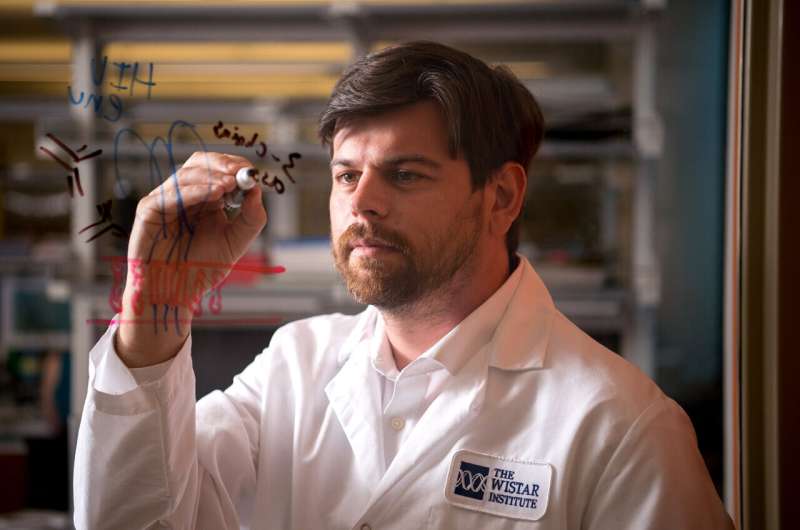Scientists move HIV vaccine research forward by developing an immunogen that produces tier-2 antibodies

Nearly four decades after its discovery, HIV has killed 36.3 million people, with no vaccine in sight. However, a new study by researchers at The Wistar Institute, an international biomedical research leader in cancer, immunology, infectious disease, and vaccine development, takes a promising step in the direction of developing an HIV vaccine.
The findings, published in Nature Communications, demonstrate the promise of using a unique native-like trimer to develop Tier-2 neutralizing antibodies—the kind that matter for combatting HIV—in mice for the first time.
Previously, eliciting these types of antibodies using candidate vaccines required long and expensive experiments in large animal models creating a significant bottleneck on HIV-1 vaccine development. "With our new finding, we have opened the door to rapid, iterative vaccinology in a model that can produce Tier-2 neutralizing antibodies, enabling development of more advanced HIV vaccine concepts," said Daniel Kulp, Ph.D., associate professor in the Vaccine & Immunotherapy Center at The Wistar Institute and corresponding author on the paper.
The researchers encoded the native-like trimer into DNA for delivery into the mice. This has the practical advantage of turning the host bodies into "antigen factories" instead of requiring what would otherwise be a complex vaccine manufacturing process. The researchers then compared the results from the mice who received the DNA-encoded native-like trimer to results from mice who received a standard protein immunization. Only those mice that received the DNA-encoded native-like trimer developed Tier-2 neutralizing antibodies.
"We were able to generate strong immune responses with both platforms, but the DNA platform uniquely drove this neutralizing response," said Kulp.
Once they'd verified their immunization regime was producing Tier-2 antibodies, Kulp and his colleagues isolated monoclonal antibodies from the mice and used cryo-electron microscopy to determine the atomic structure of one Tier-2 neutralizing monoclonal antibody. They found that the antibody binds to an epitope (a segment of a protein that sticks out of the antigen, which prompts an immune response) called C3V5. In the gold standard HIV vaccine model (non-human primates), prior research has shown that antibodies binding to C3V5 protect animals from a SHIV infection, which is a close relative of HIV that infects non-human primates.
"The structure gives us incredible insight into how this antibody is able to neutralize the virus," said Kulp. "For the first time, we can strategize about how to design new vaccines that can generate broadly neutralizing antibody responses to the C3V5 epitope."
Coauthor David B. Weiner, Ph.D., executive vice president and director of the Vaccine & Immunotherapy Center and the W.W. Smith Charitable Trust Professor in Cancer Research at The Wistar Institute, emphasized the utility of their findings.
"What we've done is enable direct in vivo self-assembly of structurally designed immunogens, which are engineered and delivered using nucleic acid technology, inside the vaccinated animal. Our data demonstrating induction of autologous Tier 2 neutralization illustrate the value of this approach as a tool to create surgically tailored immunity against a difficult pathogen's vulnerable sites, in this case for HIV."
More information: Induction of Tier-2 Neutralizing Antibodies in Mice with a DNA-encoded HIV Envelope Native Like Trimer, Nature Communications (2022). DOI: 10.1038/s41467-022-28363-z



















